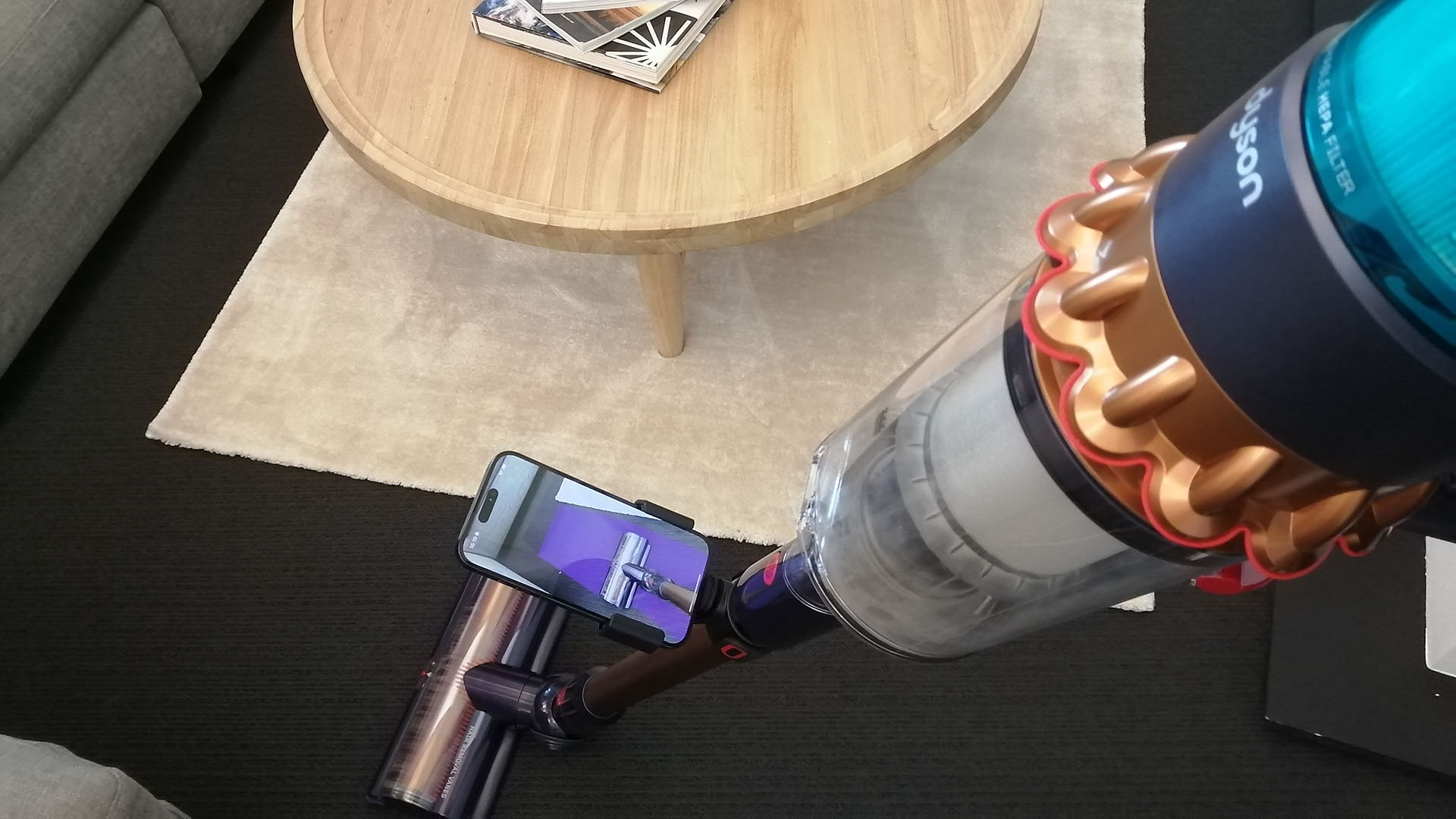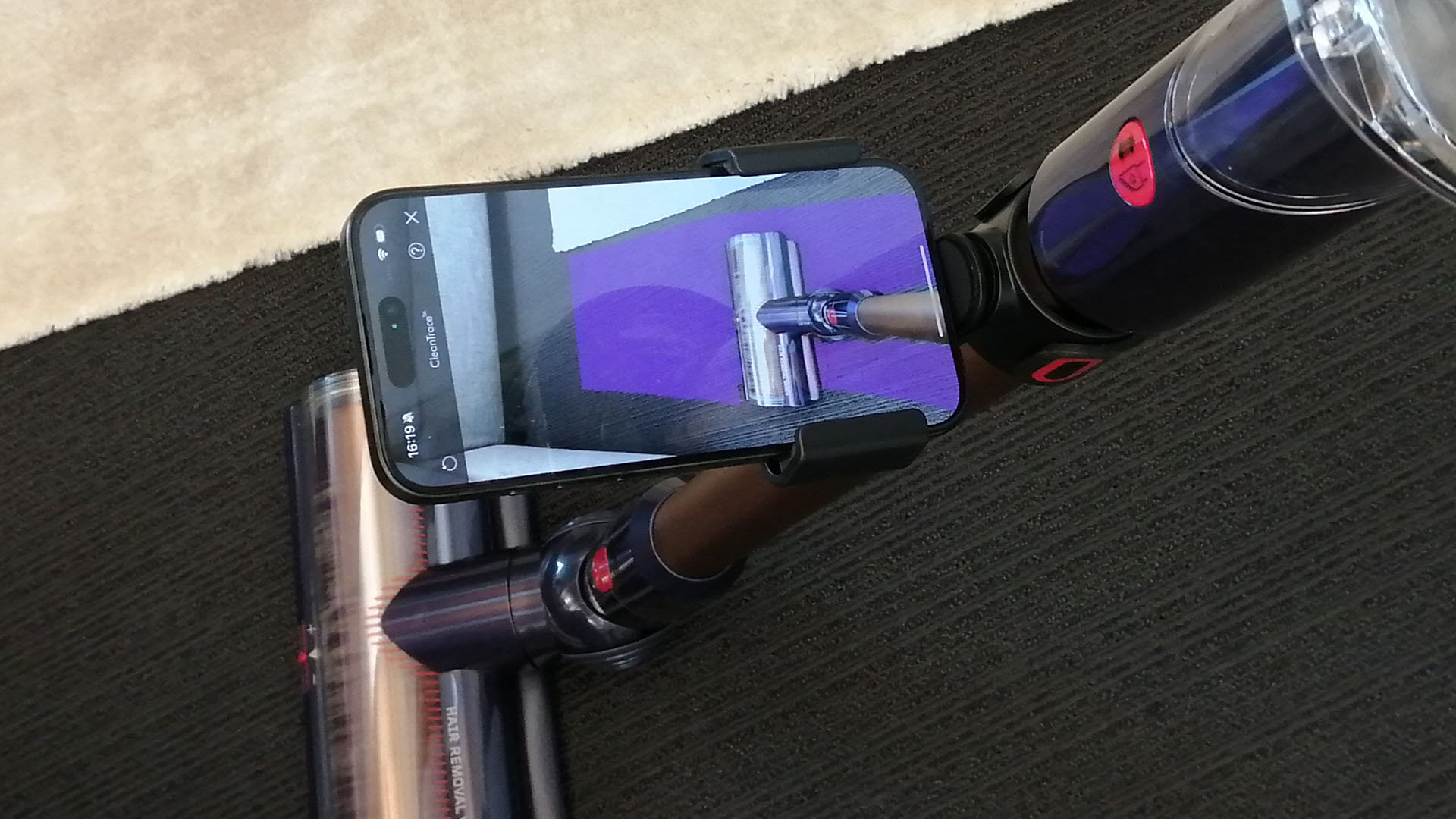I tried Dyson's CleanTrace app, and it's the most fun you can have with a vacuum cleaner
This AR app turns cleaning into a game

As the old saying goes, 'You can lead a person to a top-the-range vacuum, but you can't make them actually clean their home properly.' Dyson might be about to change that, though, with its new CleanTrace app. The AR app was announced recently, and although it's not available quite yet, I had a chance to try it out on a recent visit to the Dyson campus (where I also got some hands-on review time with the WashG1 wet cleaner) – and it has achieved the impossible, and made me excited to get the vacuum cleaner out and bust some dust.
Dyson already makes some of the very best vacuum cleaners on the market, and its new app is designed to help you use them more effectively. Dyson's engineers have designed a mount that clips to the stick of your vacuum cleaner and holds your phone, so that you can use the app while vacuuming.
The CleanTrace app displays a live feed of the room you're in, and superimposes purple streaks onto the floor in the places where you've vacuumed. When you think you've finished cleaning, you can take the phone from its mount and point it around the room to identify any missed spots.
The whole process is extremely satisfying, and if you have any kind of competitive or completist personality trait, it's almost guaranteed to make you do a better job. I'm not a huge fan of vacuuming generally, but you'd better believe that I covered every last inch of Dyson's fake living room. (Side note: I'm sure the cleaners here have the easiest job in the world, given the amount of product testing that's going on.)
There are a couple of major caveats. The first is that, because the process is based on LiDar, it's only compatible with the Pro and Max version of the iPhone 12 and above.
The second is that at launch, the app will only be available to owners of the Gen5detect vacuum cleaner. The app needs to be able to identify where the cleaner head is in order to work, and the engineer who presented the CleanTrace to us explained that it had been tuned into the design and sound of the Gen5detect specifically, and they couldn't guarantee that it would work with another model.

Although our tester was impressed with this model when they tried it out for our Gen5detect review, there's no denying that it's a fairly hefty expense if you don't happen to already own one. I suspect it would probably work fine with most models, and I also imagine if the product is successful, the company might put some effort into tweaking it to make sure of that, and open it up to other Dyson vacs.
People suck at vacuuming
The app was partly inspired by the systematic approach taken by today's best robot vacuums (including the brand's own Dyson Vis Nav robot), which are programmed to cover each bit of floor once and only once. All Dyson vacuums are designed to achieve a good clean with a single forward and backward pass; you shouldn't need to be going over the same spot over and over again.
Get daily insight, inspiration and deals in your inbox
Sign up for breaking news, reviews, opinion, top tech deals, and more.
It was also prompted by a study of cleaning behaviors that revealed that people in general are not naturally good cleaners. They both overestimate how long they're cleaning for (most people think they're vacuuming an average of 24 minutes per session, but the study revealed that 80% of cleaning sessions last less than 10 minutes) and regularly clean the same spots multiple times while missing others entirely. The CleanTrace makes it clear if you're doing an effective job or not, and also helps boost efficiency.
The Dyson CleanTrace will launch globally in June 2024, and will available from Dyson.co.uk and Dyson Demo stores only. The price is TBC.
You might also like

Ruth is TechRadar's Homes Editor specializing in air (vacuum cleaners, fans, air purifiers), and hair (hair dryers, straighteners and stylers). She has been in consumer journalism since 2020, reviewing and writing about everything from outdoor kit to mattresses and wellness gadgets, with stints on Tom's Guide and T3.